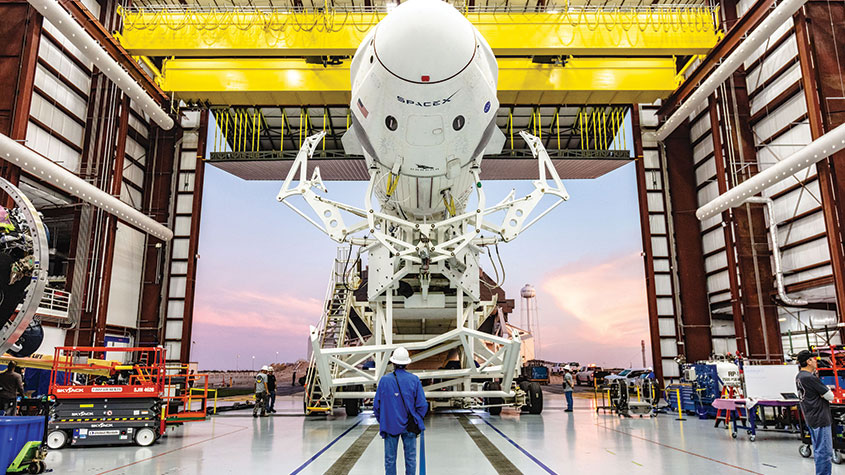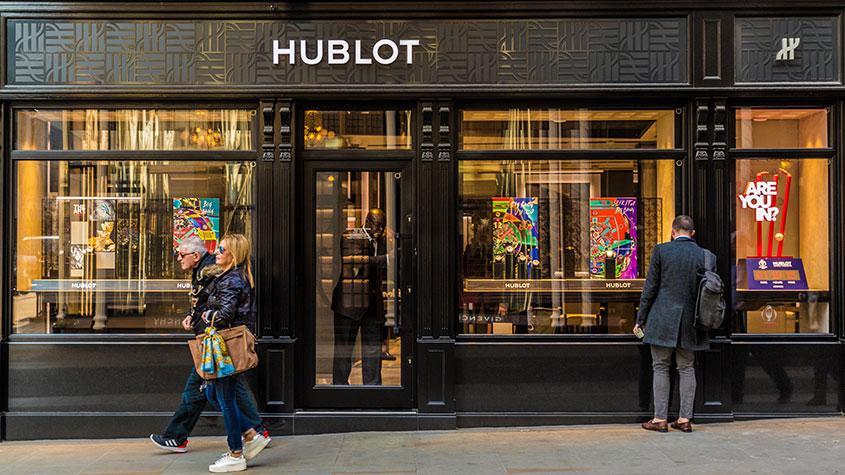How to pick winners in the new media wars
Online media is set to bite into TV advertising revenue. But how to spot the game-changers in a sector awash with jargon and hype? Simple – go back to basics, says Rupert Foster


Online media is set to bite into TV advertising revenue. But how to spot the game-changers in a sector awash with jargon and hype? Simple go back to basics, says Rupert Foster.
The founders of internet companies make their businesses sound more complicated than they are perhaps to justify their eye-watering valuations. The founders of Snap, describing their business to potential investors in their initial public offering prospectus, did not disappoint. The opening line reads: "Snap Inc is a camera company." In fact, it is a messaging application (app) for smartphones you send someone a picture or video, and it deletes itself shortly after the recipient has read it. This sort of obfuscation by internet companies is typical of their interactions with investors. So how do you decide whether the likes of the newly listed Snap are good investments or not? Ignore the hype and the "new paradigm" talk, and go back to basics.
How to analyse a new media stock
Analyse these companies as you would any other business. How does it make money? And how stiff is the competition? The five largest global internet companies are Alphabet (Google), Amazon, Facebook, Alibaba and Tencent (see box on page 26). Their collective market capitalisation is around $2trn, and they slot into two main categories online media and ecommerce.
MoneyWeek
Subscribe to MoneyWeek today and get your first six magazine issues absolutely FREE

Sign up to Money Morning
Don't miss the latest investment and personal finances news, market analysis, plus money-saving tips with our free twice-daily newsletter
Don't miss the latest investment and personal finances news, market analysis, plus money-saving tips with our free twice-daily newsletter
Snap is in the online media sector, which in turn splits into two main fields: search and social media. All of the companies depend on advertising revenue the same advertising dollars that traditional media businesses (TV, newspapers, billboards) have squabbled over for years. So there is nothing mysterious about these new firms just focus on the same metrics you would use to gauge growth potential for traditional media. That gives us four key numbers to watch.
1. Number and growth of users (readers or viewers)
| Company | DAU/MAU | Users | Growth (yoy) |
| DAU | 4bn | +c.20% | |
| Tencent | MAU | c.2bn | +c.15% |
| MAU | c.1bn | +c.5% | |
| Baidu | MAU | 667m | +c.5% |
| Alibaba | MAU | 493m | +c.12% |
| MAU | 313m | flattish | |
| Snap | DAU | 158m | +48% |
Users are the lifeblood of any online media site, just as viewers or readers are key to "old" media companies. One point to remember is that Chinese sites and some Western ones report monthly active user (MAU) figures, whereas others report daily active user (DAU) numbers. MAU is a lower-quality metric someone who logs in once a month is hardly engaged. The industry assumption is that DAUs will be 60% of MAUs, but in reality the figure will vary depending on the site.
Facebook is top dog on this measure. It has four billion regular users across four different apps (Facebook, Messenger, WhatsApp and Instagram) and the number of users is still growing at around 20% a year. There is a lot of crossover in terms of users between the four apps, but this doesn't matter each offers a different user experience, so anyone using all four is merely increasing the time they spend inside Facebook's corporate environment (or "walled garden").
In effect, this is the equivalent of ITV having four hit TV shows they cannot all be watched at the same time, so advertisers will pay for airtime during all four to send messages to the same individual. Facebook is also the only truly mass-market Western social media group nearly 63% of the over-65s in the US are now active daily users.
Tencent focuses on China. Like Facebook it has several apps, including QQ, Weibo, and WeChat Moments. As a result, its regular user base is larger than China's population. In China the government has allowed three companies to dominate the internet: Tencent, Baidu and Alibaba.
Tencent not only has the largest social media and messaging business, but also the largest online gaming business; the second-largest online payments, retail, finance and TV streaming companies; as well as the largest ride-sharing business, and many more. This allows for high levels of cross-fertilisation within its walled garden. In this context, Snap is a bit player, albeit one with a very specific audience. Just one of Facebook's businesses Instagram added as many new users in 2016 as Snap has in total.
2. Current advertising revenue and pricing trends
| Company | Quarterly advertising revenue |
| $22,309m | |
| $8,629m | |
| Alibaba | $4,200m |
| Baidu | $2,400m |
| Tencent | $1,095m |
| Amazon | $300m |
| Snap | $165m |
Google was the earliest mover and still attracts the most advertising revenue, with 16%-20% of the global advertising market. Facebook has accelerated rapidly in the last year or two, but is still quite a distance behind. In China, however, advertising is mostly drawn not to search engines or social media companies, but to retailers such as Alibaba. That should provide some comfort for Amazon bulls, as the US ecommerce giant currently generates little advertising revenue, given its size and user base.
3. Average advertising revenue per user (ARPU)
| Company | ARPU (quarterly) |
| Average TV company | $35-$70 |
| c. $50 | |
| $19.80 | |
| $5.70 | |
| Snap | $2.15 |
| Amazon | $1.20 |
I have focused on the US at 1.4% of GDP, the US is the biggest spender on advertising in the world. The UK is next, while Germany and France spend a third of US levels (which explains why media companies focus so heavily on the US, and to an extent, the UK). China's spending on online media is a third that of the US. However, leading advertising forecaster IDC believes China will be at 60% of US levels by 2020. Between them, the US and China will utterly dominate online media spending by 2020 with the UK next at a sixth of China's levels.
As for the effect on traditional media, so far online media has taken market share from newspapers and billboards, but has not really bitten into TV advertising. This is the key battleground for the next five years as online media companies start to offer products that are closer to TV-style offerings. For example, public live-streaming is the new growth area within social media. It's essentially home-made reality TV: amateurs make live TV for other viewers to watch almost the eBay of telly. This is encouraging more and more young people to watch their phones rather than their TVs.
Traditional social media doesn't directly compete with TV it replaces talking to your friends /family in person or on the phone. But Facebook and other social media groups are now entering the content acquisition business because they want to raise the amount of time each user spends in the walled garden. This will lead them into direct competition with TV. Looking at the above data, Google is the only company close to making the same amount from advertising as TV does. But given the ability of online media to be directed at the "right" customers, this seems unlikely to continue in the long run Facebook could easily double its US monetisation rate over the next two or three years.
4. Time per day per user
| Company | Time per day |
| TV | 240 mins |
| Tencent | 60 mins |
| 50 mins | |
| Snap | 25-30 mins |
| 20 mins |
Across all of its websites, Facebook takes up 90 minutes a day of its average user's time, and Snap has done a great job to get to 25-30 minutes, but TV is still way out in front on four hours. That is a long time in which to interweave advertisements. A key "deliverable" for Facebook, Snap and Tencent is to raise this metric over the next five years. The acquisition of key content to stream, plus growth in public live streaming, should take a big chunk of TV advertising revenue in the next few years.
You're better off buying Google or Facebook
So where does this leave us on the IPO of the year? Snap has learned from Twitter's experience. It's not trying to challenge Facebook as the catch-all provider of social interaction. It's focused on its core clientele the under-35s. It also recognises that its "delete" functionality alone won't keep users coming back, so has added the ability to manipulate picture posts using "funny face" add-ons. This is clever, but it reveals the weakness of Snap's model. Its audience is fickle and trend-following, which means Snap must be at the forefront of every new trend. So far it's been good at that, but it's tough to stay ahead for years, and to hang on to the top software engineers needed to do so. It's fine when your share price is rocketing (top engineers get most of their remuneration via stock grants), but not when it falls and cash salaries have to rise to compensate. That's what happened to Twitter, which has seen its research and development costs rise to an eye-watering 22% of sales. Firms that have to keep generating "hits", such as video-game groups, should trade on lower earnings multiples because of the risks of this model. Snap is in this camp.
Could Snap grow and attract a mainstream middle-aged audience? Possibly, but it would be costly and risky, and the prospectus suggests it won't try. This is sensible there's nothing wrong with being the MTV of social media. Snap's founders are hopefully aiming to build a business that might, over time, rise to a stable $30bn valuation (from an IPO value of $21bn or so), still just 7.5% of Facebook's current market cap.
What about other growth opportunities? Snap could expand abroad, but monetisation outside China is low, and Snap is unlikely to enter China because Google which is banned from the country provides its server support. I also doubt China would be happy with Snap's delete function because it would be hard to police. Also, most countries already have "cool young people" apps it's the most competitive part of the market because Facebook and Tencent haven't aggressively targeted it. In China there are currently more than 300 public live stream apps alone. Finally, Facebook has one business that has directly challenged Snap Instagram. Last year, Instagram launched Stories, a direct rival to one of Snap's leading products. It took in 100 million users within four months (Snap has 158 million in total). This unnerved Snap clearly, Facebook could restrict its growth materially.
None of this matters if it's in the price. But is it?The IPO price seems to factor in limited user growth, but to look anything close to good value, one must assume that global ARPU rises from $1 in 2016 to $8 in the next three years. This would put Snap on 17.5 times 2019 earnings, assuming it can achieve Facebook's 32% pre-tax margins. But Facebook and Google which are bigger and less risky both trade on far cheaper multiples. So why would you buy Snap instead? I think we need to see a big fall I'm talking 30%-40% post-IPO to make Snap appealing. But then, maybe the managers just want to prepare the business for sale. Their "cool young people" audience makes them an attractive bolt-on acquisition for a non-social-media behemoth, such as Apple or Walt Disney, that wants to build its own walled garden. The founders of Snap were very brave to turn down $3bn from Facebook a few years ago. Having successfully rolled the dice once, they should now cash in if anyone taps them on the shoulder and offers anything near the IPO price. Needless to say, you shouldn't touch it.
Key online media and retail companies
Search engines
Alphabet (Nasdaq: GOOGL): owns and makes most of its money from Google, the dominant internet search engine outside China. It's also involved in fields ranging from artificial intelligence to self-driving cars to life sciences.
Baidu (Nasdaq: BIDU): the dominant search engine in China.
Social media sites
Facebook (Nasdaq: FB): the dominant player in social media outside China. It owns Messenger (a text messaging service); WhatsApp (a messaging app);and Instagram (a photo-sharing app).
Tencent (HK: 700): The dominant social-media website in China. It owns messaging service QQ; Weibo (a microblogging service like Twitter); and messaging service WeChat Moments.
Twitter (NYSE: TWTR): a microblogging service.
Snap (NYSE: SNAP): sends messages that self-destruct.
Pinterest (not listed): saves images to public virtual message boards.
Line (Tokyo: 3938): a text messaging service and Japan's largest social network.
Ecommerce
Amazon (Nasdaq: AMZN): the world's biggest ecommerce firm.
Alibaba (NYSE: BABA): the dominant ecommerce site in China.
Get the latest financial news, insights and expert analysis from our award-winning MoneyWeek team, to help you understand what really matters when it comes to your finances.
Rupert is an investment strategist and adviser at J & C Foster, providing Asian, Consumer and Global Equities Strategy advice to a number of family offices and portfolio management organisations. He writes on Asia and Global Macroeconomics for a number of investment publications including MoneyWeek and HL Investment Times.
-
 The graphene revolution is progressing slowly but surely
The graphene revolution is progressing slowly but surelyEnthusiasts thought the discovery that graphene, a form of carbon, could be extracted from graphite would change the world. They might've been early, not wrong.
-
 How Javier Milei led an economic revolution in Argentina
How Javier Milei led an economic revolution in ArgentinaFollowing several setbacks, Argentine president Javier Milei's pro-market reforms have been widely endorsed in a national poll. Britain will need the same
-
 Invest in space: the final frontier for investors
Invest in space: the final frontier for investorsCover Story Matthew Partridge takes a look at how to invest in space, and explores the top stocks to buy to build exposure to this rapidly expanding sector.
-
 Invest in Brazil as the country gets set for growth
Invest in Brazil as the country gets set for growthCover Story It’s time to invest in Brazil as the economic powerhouse looks set to profit from the two key trends of the next 20 years: the global energy transition and population growth, says James McKeigue.
-
 5 of the world’s best stocks
5 of the world’s best stocksCover Story Here are five of the world’s best stocks according to Rupert Hargreaves. He believes all of these businesses have unique advantages that will help them grow.
-
 The best British tech stocks from a thriving sector
The best British tech stocks from a thriving sectorCover Story Move over, Silicon Valley. Over the past two decades the UK has become one of the main global hubs for tech start-ups. Matthew Partridge explains why, and highlights the most promising investments.
-
 Could gold be the basis for a new global currency?
Could gold be the basis for a new global currency?Cover Story Gold has always been the most reliable form of money. Now collaboration between China and Russia could lead to a new gold-backed means of exchange – giving prices a big boost, says Dominic Frisby
-
 How to invest in videogames – a Great British success story
How to invest in videogames – a Great British success storyCover Story The pandemic gave the videogame sector a big boost, and that strong growth will endure. Bruce Packard provides an overview of the global outlook and assesses the four key UK-listed gaming firms.
-
 How to invest in smart factories as the “fourth industrial revolution” arrives
How to invest in smart factories as the “fourth industrial revolution” arrivesCover Story Exciting new technologies and trends are coming together to change the face of manufacturing. Matthew Partridge looks at the companies that will drive the fourth industrial revolution.
-
 Why now is a good time to buy diamond miners
Why now is a good time to buy diamond minersCover Story Demand for the gems is set to outstrip supply, making it a good time to buy miners, says David J. Stevenson.
